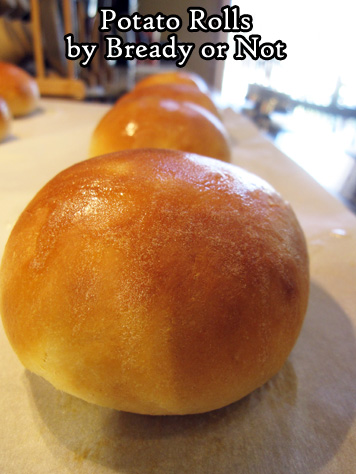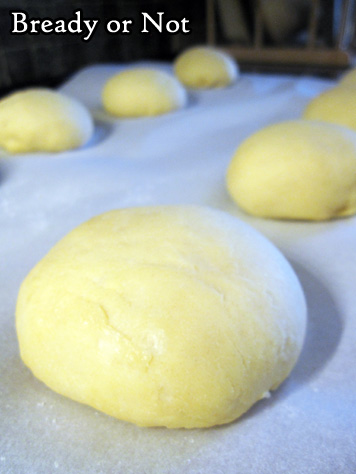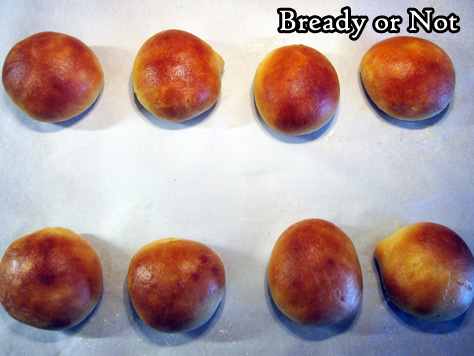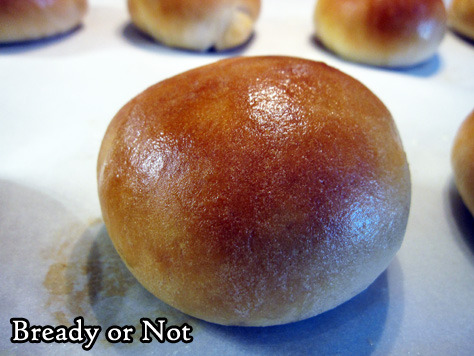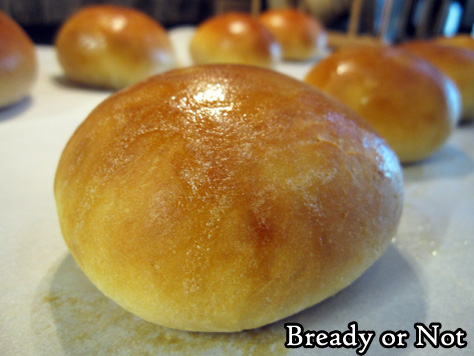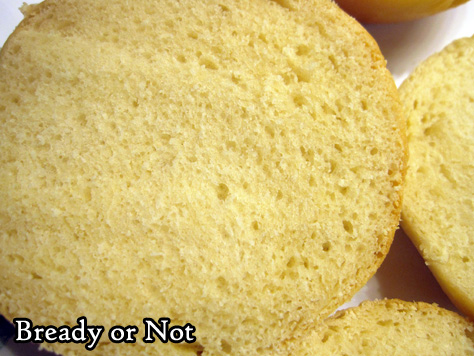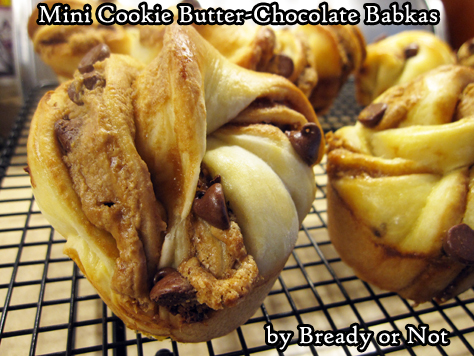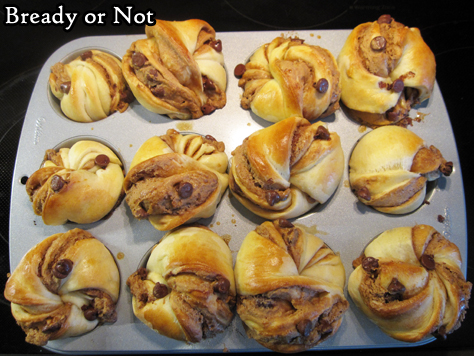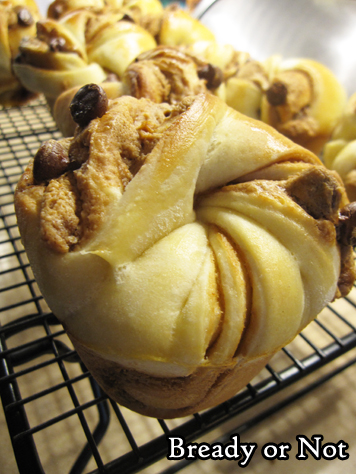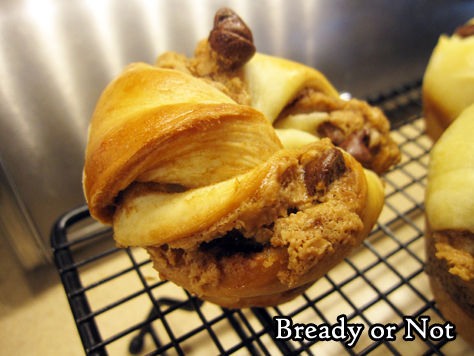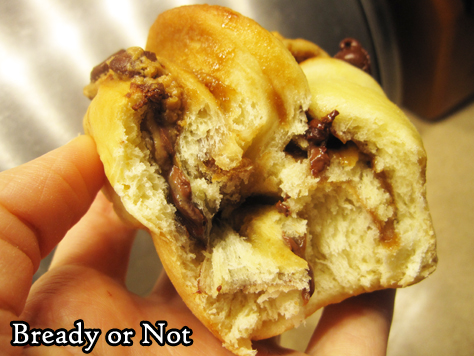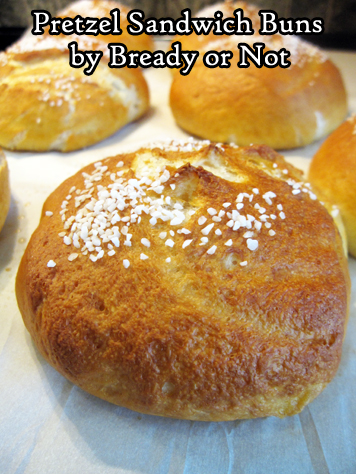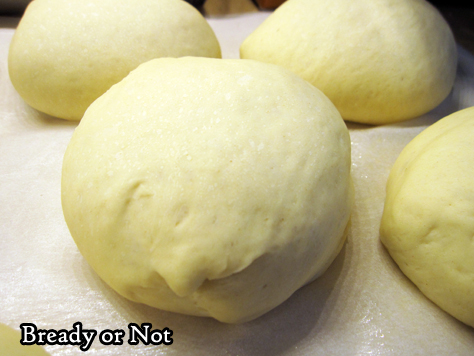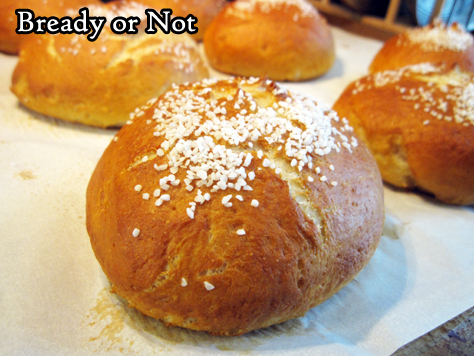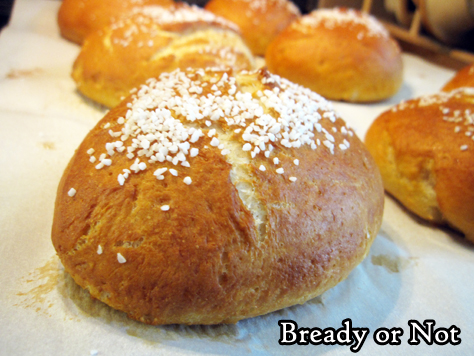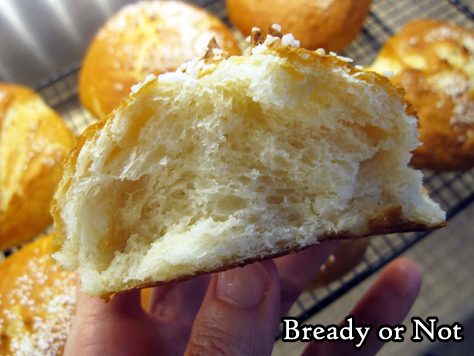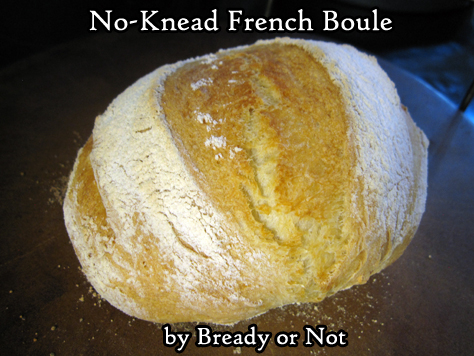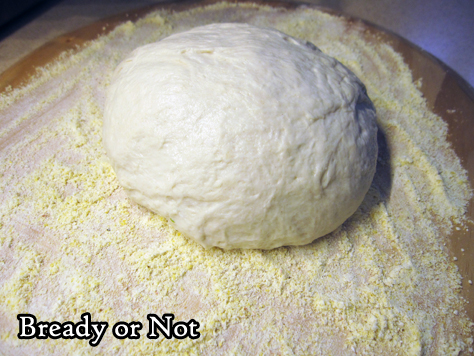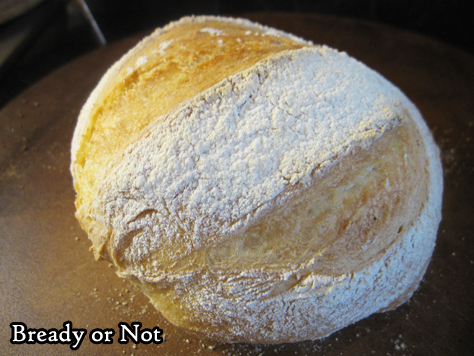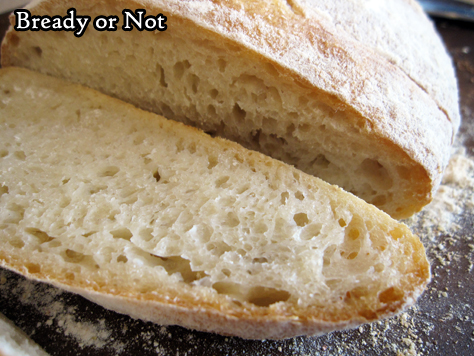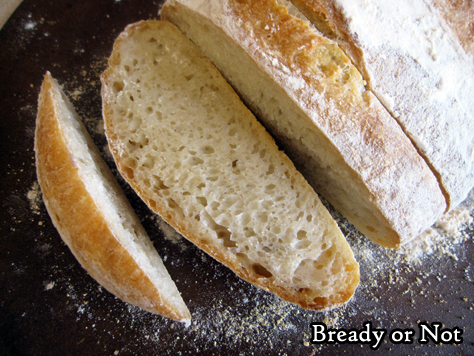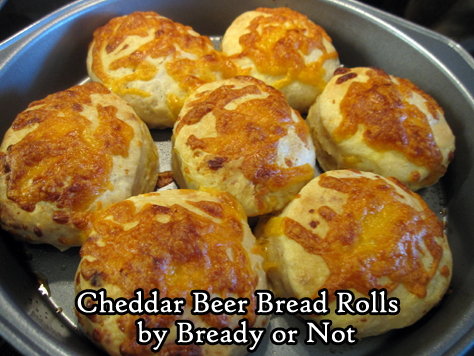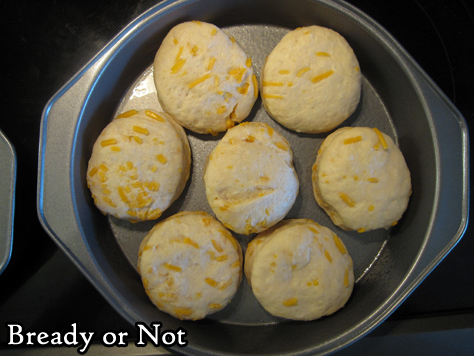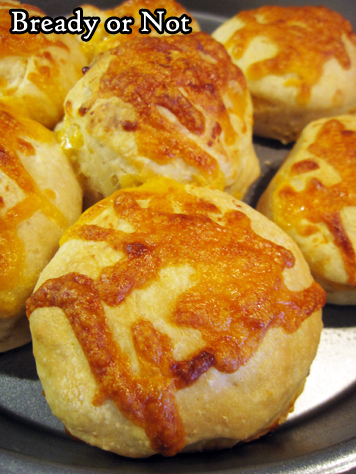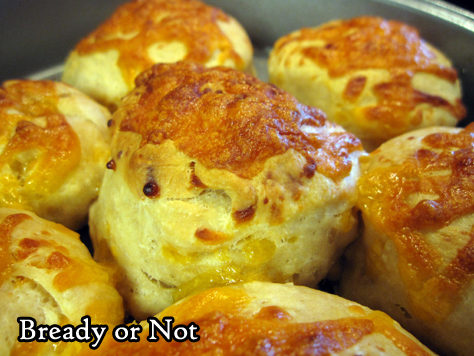Bready or Not: Potato Rolls
These Potato Rolls are perfect for a hearty sandwich with a wet filling like BBQ sauce.
The ‘potato’ here is potato flour, a not-so-secret ingredient to create soft bread with a tender crumb. It handles moisture in a different way than standard wheat flours.
It’s not the kind of thing carried by a standard grocery store, but the internet comes to the rescue! I use the kind sold by King Arthur Flour (an all-around fantastic purveyor of bready goods), but it is also sold by Bob’s Red Mill and (of course) Amazon. Check your local natural goods store, too.
Nonfat dry milk powder IS sold by many grocery stores, but I like the results of King Arthur Flour’s version best.
I’ve made these rolls several times and I find they didn’t double for me during the rise stages, but did they puff, and at the end the crumb showed a good texture inside.
I found that dividing by 8 made for good-sized sandwich rolls, but you can make these as big or small as you want, and any shape, too.
Modified from Food & Wine Magazine June 2020.
Bready or Not: Potato Rolls
Equipment
- parchment paper
- food scale
- basting brush
Ingredients
- 2 2/3 cups bread flour
- 1/3 cup potato flour available from King Arthur Flour and Bob's Red Mill
- 1/3 cup nonfat dry milk powder
- 2 1/2 Tablespoons white sugar
- 2 teaspoons kosher salt
- 2 1/4 oz active dry yeast or one store-bought envelope
- 1 cup warm water 100 to 110-degrees
- 5 Tablespoons unsalted butter divided
Instructions
- In the bowl of a stand mixer, combine the warm water and 4 Tablespoons of melted butter. Add the bread flour, potato flour, milk powder, sugar, salt and yeast, and mix using the dough hook. Beat until the dough is cohesive, about 3 minutes.
- Increase the mixer’s speed and beat for another 6 minutes to make it smooth and elastic. Dough might be sticky. Grease another large bowl and dump the dough in there. Cover with plastic wrap or a towel and let it rise for 45 minutes to 1 hour.
- Place parchment paper on a large baking sheet. Use the food scale to weigh the dough. To make rolls of a good sandwich size, divide the total by eight; if smaller rolls are desired, go smaller. Pull off pieces of dough and shape into rounds. To smooth the surface, keep a saucer with water in it nearby, and use moistened fingers to smooth the dough. Set rounds spaced out on parchment. Loosely cover rolls with plastic wrap or a towel and let rise until they are puffy, about 35 to 45 minutes.
- Preheat oven at 350-degrees. Remove plastic wrap or towel. For sandwich-sized rolls, bake for 15 to 19 minutes, until the outside is nicely browned. Dip the basting brush into the remaining tablespoon of butter, and paint butter atop each roll to make glossy.
- Let rolls cool at least 15 minutes before cutting in. Rolls will keep for at least 2 days in a sealed bag at room temperature. They can also be frozen and thawed for later consumption.
OM NOM NOM!
Bready or Not Original: Mini Cookie Butter-Chocolate Babkas
I hope it gets your attention when I say that these Mini Cookie Butter-Chocolate Babkas are among the best things I have ever made.
Really, these have it all going on. A tender enriched dough. Gooey chocolate. The sweet joy of cookie butter. Plus, the presentation is stunning with the dough coiled to reveal the layers of goodness.
Even better, this recipe is great about portion control. You don’t have a babka loaf to worry about. Each babka is muffin-sized. This makes it easy to take on the go, and they are also convenient to freeze.
If you’re unsure what cookie butter is, it is essentially sliced cookies pureed with oil to be the same consistency as peanut butter. It tastes like cookie dough in its purest form minus the risk of salmonella poisoning from raw eggs or flour. Find it near the peanut butter in a lot of stores; Biscoff is the most common brand, and it’s called Speculoos at Trader Joe’s.
You can, of course, substitute a smooth peanut butter in this recipe–which is what the original recipe in Bake from Scratch was all about. But me, nah, I’m a rebel. And my husband doesn’t like peanut butter, and he’s the one who needs to eat these things.
Modified greatly from Bake from Scratch Magazine July/August 2019; also online.
Bready or Not Original: Mini Cookie Butter-Chocolate Babkas
Equipment
- 12-cup muffin pan
- nonstick spray
- pastry brush
Ingredients
- 4 1/4 to 4 1/2 cups all-purpose flour divided
- 1/2 cup white sugar
- 2 1/4 teaspoons instant yeast or one store-bought packet
- 1 1/2 teaspoons kosher salt
- 1 cup plus 1 Tablespoon water divided
- 1/2 cup plus 1 Tablespoon unsalted butter melted and divided
- 2 large eggs room temperature and divided
- 1 large egg yolk room temperature
- 1 cup creamy cookie butter
- 1/4 cup confectioners’ sugar
- 1 teaspoon vanilla extract
- 1/3 cup semisweet chocolate chips plus extra
Instructions
- In the bowl of a stand mixer fitted with the paddle attachment, stir together 4 cups flour, white sugar, yeast, and salt.
- Using a saucepan or the microwave, heat 1 cup water and 1/2 cup (1 stick) butter until it is 120 to 130-degrees on an instant-read thermometer. Pour the water mixture into the flour mixture. Beat at medium speed for 2 minutes. Add one egg and egg yolk, and beat for another 2 minutes. Beat in a 1/4 to 1/2 cup more flour until a soft, sticky dough forms.
- Switch to the dough hook attachment. Beat at low speed until dough is soft, smooth, and elastic, 6 to 8 minutes.
- Add nonstick spray to a large bowl. Shape dough into a smooth ball, and place in bowl. Roll it briefly to coat in oil. Cover the bowl and let the dough rise in a warm spot until doubled in size, about 45 minutes.
- Use nonstick spray on a 12-cup muffin pan.
- In a small microwave-safe bowl, melt 1 Tablespoon butter. Add to it the cookie butter, confectioners’ sugar, and vanilla, stirring until smooth.
- On a lightly floured surface, roll the dough into roughly a 20x12-inch rectangle. Spread cookie butter mixture onto dough. Sprinkle with chocolate chips. Fold rectangle crosswise into thirds as if folding a sheet of paper for an envelope, forming a smaller rectangle, about 12x6 inches.
- Cut rectangle crosswise into 12 (about 1 inch) dough strips. Gently stretch and twist one to coil it inside a prepared muffin cup, tucking the end inside edge of cup to create a rounded top. Repeat 12 times. If desired, press a couple of additional chocolate chips into the top of each babka, but try to place them so they won't melt off the pan during baking.
- Cover and let rise in a warm spot until they are puffed, about 30 minutes. Meanwhile, preheat oven to 325-degrees.
- In a small bowl, whisk together the last egg with 1 Tablespoon water. Brush tops of dough with egg wash.
- Bake until babkas are golden brown, about 17 to 25 minutes. An instant-read thermometer inserted in center should register 190-degrees.
- Babkas are much better served warm--eat them fresh, or heat up later with a 20-30 burst in the microwave! This makes the dough soft and the chocolate gooey. They keep well sealed at room temperature for up to 3 days, but can also be frozen and thawed later.
OM NOM NOM!
Bready or Not: Pretzel Sandwich Buns
If you need a good, sturdy sandwich roll, these Pretzel Sandwich Buns are delicious bready conveyances.
With my husband home a lot more in 2020, I revisited some bread recipes I hadn’t made in years. This is one of them, which I originally featured on Bready or Not in 2014.
I rewrote the recipe to clarify some things. The recipe is a fine one to do in a KitchenAid (yay, bread hook!), but I really like making this dough in my bread machine. Add the ingredients in whatever order is specified by your machine; for me, that means liquid ingredients first.
When it is time to do the water bath, be vigilant! That baking soda makes the water especially turbulent and foamy.
These rolls are great for things like shredded pork with BBQ sauce. They don’t get soggy and dissolve in your hands. Also, these are just straight-up good split in half, buttered, and heated in the oven.
2020 was a sucky year, but at least it enabled me to rediscover some recipes like this one!
Modified from King Arthur Flour.
Bready or Not: Pretzel Sandwich Buns
Equipment
- large pot
- slotted spoon
Ingredients
Dough
- 1 3/4 cups warm water
- 2 Tablespoons unsalted butter softened
- 3/4 teaspoon salt
- 4 1/2 cups all-purpose flour or bread flour
- 1/4 cup nonfat dry milk
- 2 teaspoons instant yeast
Topping
- pretzel salt or substitute kosher salt
Water Bath
- 2 quarts water
- 1 Tablespoon salt
- 1/4 cup baking soda
Instructions
- Mix and knead the dough ingredients by hand, mixer, or bread machine to make a smooth, slightly sticky dough. If making by hand or mixer, allow the dough to rise in a lightly greased bowl, covered, for about 1 hour, until doubled. In a bread machine, let the full dough cycle run through.
- Gently deflate the dough, and transfer it to a lightly floured work surface. Shape the dough as necessary. This can mean weighing the dough then dividing it into portions, or using a biscuit cutter or other shaper to slice. Note that if the dough is being cut, keep it thick, as it won't double on the second rise. Recipe can make about 5 to 6 big sandwich rolls. Roll dough with hands with smooth out the shape.
- Place the balls on a lightly greased baking sheet, cover with plastic wrap, and let rest for 15 minutes.
- While dough rests, preheat the oven to 400-degrees and prepare the water bath for the stovetop. In a large pot, bring the water, salt, and baking soda to a boil.
- Use a slotted spoon to gently lower several dough balls at a time into the water bath. Cook for 30 seconds, flip over, and cook for 30 seconds longer. Using the slotted spoon, return the buns to the baking sheet.
- Use scissor or a sharp knife to cut half-inch deep crosses into the center of each bun. Sprinkle with coarse salt.
- Bake buns for 20 to 24 minutes (or a lower time, if they are shaped smaller). They should be nicely brown all over. Transfer to a rack to cool.
- Buns will keep well in a sealed bag at room temperature for up to 2 days. The bread is great at room temperature or warmed in an oven or toaster oven. The rolls can be frozen, but note that the top can sog slightly when they are thawed, which isn't a problem if the rolls are heated/toasted to be eaten.
OM NOM NOM!
Bready or Not: No-Knead French Boule (French Bread Round)
French bread is one of the best things in the world and it is super-easy to make. All you need are four ingredients and some time.
The time element is not that much of an issue, though, because this takes all of five minutes to mix up. After an initial rise, the dough can then be tucked away in the fridge for up to two weeks.
If this technique looks familiar, it’s because it’s similar to the recipe I shared in February for my favorite pizza dough. They are both modified from the book Artisan Bread in Five Minutes a Day.
The boule, or bread round, is the most traditional form of French bread. The baguette is actually an innovation from the 1920s. The boule was first, and is, arguably, the best.
This bread is perfect to slice up, butter, and toast. It’s great for sandwiches. For charcuterie and cheese. To make French toast. Any way you can eat bread, really.
It’s also great to freeze and thaw for later enjoyment! This is really a recipe that is all about convenience, before and after baking.
Bready or Not: No-Knead French Boule (French Bread Round)
Equipment
- baking stone or baking steel
- small metal cake or casserole pan
Ingredients
- 1 1/2 cups lukewarm water
- 2 1/4 teaspoons active yeast or one store packet
- 3 1/4 cups all-purpose flour
- 2 1/4 teaspoons kosher salt
Instructions
- Warm the water to just above body heat, about 100-degrees. Pour it into a large bowl. Add the yeast, flour, and salt. Stir until everything is uniformly moist, no dry patches to be found.
- Loosely cover the bowl with plastic wrap, waxed paper, or an off-kilter lid, and set in a warm spot in the kitchen.
- After about 2 hours, it should double in size and flatten out on the top; a colder kitchen may need as long as 5 hours, which is fine.
- The dough can be used now, but is very sticky. It's easier to work with if it has chilled in the fridge for at least 2 hours, but can idle in there overnight or for as long as 2 weeks. Keep loosely covered so that it doesn't dry out.
- Prepare a piece of parchment with a dusting or flour, semolina, or fine cornmeal. To shape the dough into a round, dust hands with flour then gently shape dough into a ball, tucking and smoothing rough bits into what will become the bottom. Set dough on prepared parchment. Let rise for 20 to 30 minutes. It may not rise a lot, but should puff a bit.
- Start preheating oven at 450-degrees. Place baking stone or steel in the middle rack of the oven. Place the empty metal cake or casserole pan beneath it. Let the oven heat for 20 minutes.
- Measure out 1 cup of water.
- After the bread has risen for about 40 minutes, lightly dust the top of the dough with flour. Use a lame or serrated knife to slash lines across the top.
- Pull the hot stone or steel from the oven. Use the parchment to carefully transfer the dough onto the hot surface. Set baking sheet into oven. Pull out the heated pan on the shelf below. With care, pour the water into the pan; do not overfill! Gingerly push the shelf back into place and close the oven so that the steaming water can work its magic on the baking bread.
- Bake for about 30 minutes. Do NOT open the oven until the end of that time! The bread should look crusty and golden over the top. Pull out the pan and let the bread cool. It may emit a crackling sound as it cools down. If the bottom is carefully thumped, the bread should sound hollow.
- Let cool about 20 or 30 minutes before cutting into the bowl. Store in a sealed bag for up to 2 days. If freezing portions of the bread, do so within the first day so they will be as fresh as possible.
OM NOM NOM!
Bready or Not: Cheddar Beer Bread Rolls
These Cheddar Beer Bread Rolls taste as good as they look. Seriously.
When the pandemic sent everything topsy-turvy in spring 2020, my husband ended up working from home more often. That meant I needed to feed him more often.
So, like so many people, I started baking more bread. These rolls were among the first of my experiments, and they were a major hit.
The original recipe from New York Times Cooking made a huge batch of rolls. I needed enough rolls to feed one guy, with a extras frozen for later.
I rewrote the recipe to delicious results. I used a Guilt Lifter beer to make these, which lent a refreshing hoppy flavor. A heavier and darker beer will create heavier and darker flavor. Try different beers to suit your tastes and match your meal.
Bready or Not: Cheddar Beer Bread Rolls
Equipment
- 2 8-or 9-inch cake pans
- 2.5-inch round cutter
- plastic wrap
- basting brush
Ingredients
- 2 Tablespoons unsalted butter divided
- 3 cups all-purpose flour or bread flour
- 1/2 Tablespoons instant yeast
- 1 teaspoon coarse kosher salt
- 2 Tablespoons honey
- 1 cup beer room temperature
- 1 cup shredded cheese 120 grams
Instructions
- Divide the two tablespoons of butter in half, separating them to soften at room temperature.
- In a stand mixer with a bread hook attachment, stir together the flour, yeast, and salt. Follow up with 1 tablespoon of softened butter, honey, and beer. Mix on low speed for 4 minutes, scraping the bowl as needed. Increase the speed to medium for another 2 minutes, pulling the dough from the hook a few times. Add about half the cheese, reserving the rest to go on top later. Mix the cheese until it's distributed through the dough.
- Lightly grease a large bowl. Transfer the dough there and cover with plastic wrap or a towel to let it rise until it's about doubled in size, about an hour.
- Grease the two cake pans. Prepare a lightly floured surface and tip the dough onto it. Pat the dough out into a thick, even layer. Use the cutter to slice out rolls. Place them not quite touching in the pans. Reform scraps as much as possible to shape into more rolls. The rolls likely won't quite fill both pans.
- Cover pans with plastic wrap and set in a warm place to rise again for 35 to 45 minutes. They may not increase a lot in size, but they should look puffy.
- Preheat oven at 400-degrees.
- Pull out remaining pat of butter and cheese. Brush the soft butter over the rolls, and follow up with a sprinkling of cheese. Try to keep the cheese from touching the edge of the pan, where it could burn.
- Place both pans in the oven and bake until the rolls are browned and cheese is melted, 15 to 20 minutes. A digital thermometer in a center roll should read 190-degrees at minimum.
- Let cool for at least 10 minutes before (carefully) pulling apart and serving.
- Rolls can keep in a sealed bag at room temperature for up to 2 days. They can also be frozen and thawed for later enjoyment. They taste best hot. For best results, wrap them in foil and bake at 400 for about 10 minutes to warm them through.
OM NOM NOM!
Bready or Not: 5 Minute Artisan Pizza Dough and Cast Iron Pan Pizzas
Today’s Bready or Not is a 2-for-1 deal: a recipe for fast and easy pizza dough, followed by the process I use for divvying up that dough to make small but thick cast iron pan pizzas.
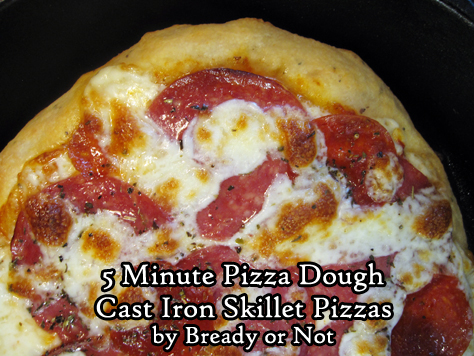
The basic dough recipe is modified from the great book Artisan Bread in 5 Minutes a Day. [Affiliate link] Yes, this dough really comes together in 5 minutes. It also keeps for up to 2 weeks AND can be frozen.
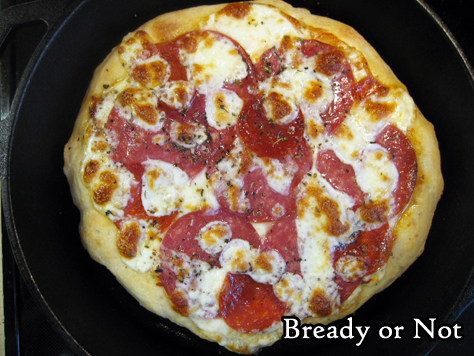
The method for making mini pizzas in a skillet is one I practiced a few times several years ago, then made a LOT during 2020 as my husband was working from home more often. I perfected it to the point where I had to write it down–and share here.
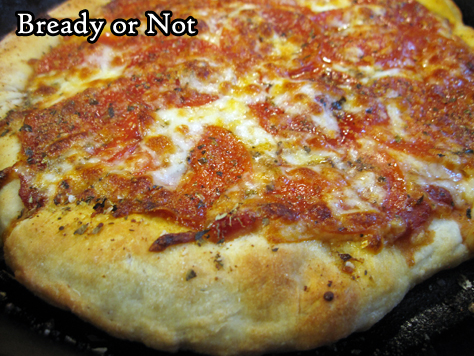
The pan pizza recipe is pretty much an outline to show the timing on the shaping, rise, and crust-cooking, but the ingredients are all up to you!
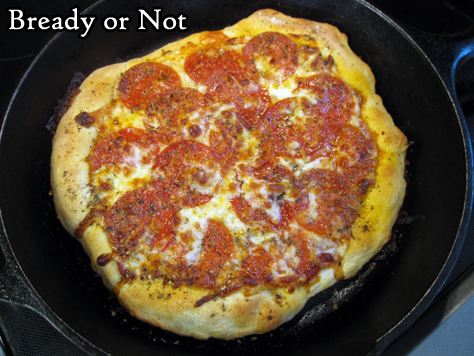
Bready or Not: 5 Minute Artisan Pizza Dough
Ingredients
- 1 1/3 cups warm water
- 2 Tablespoons olive oil
- 1/2 Tablespoon white sugar
- 3 1/4 cups all-purpose flour
- 3/4 Tablespoon kosher salt
- 2 teaspoons pizza seasoning or Italian seasoning, optional
- 2 1/4 teaspoons active yeast or one packet store-bought active yeast
Instructions
- Place the water, olive oil, and sugar in a big mixing bowl, stand mixer, or food processor. Add the flour, salt, and seasoning, if using. Start mixing together, then sprinkle in the yeast. Mix until just combined.
- Keep in same bowl, if desired, or transfer to another bowl that is greased. Loosely cover top with plastic wrap or towel and let dough rise at room temperature until it flattens out on top, about two hours.
- Dough can be used now but is much easier to handle when cold. Refrigerate in a non-airtight container and use within two weeks. Dough can also be frozen in freezer bags, for up to a month, and defrosted later in the fridge.
OM NOM NOM!
Bready or Not Original: Cast Iron Pan Pizzas
Equipment
- 10-inch cast iron skillet
Ingredients
- handful pizza dough
- olive oil
- desired toppings and seasonings
Instructions
- Preheat oven at 450-degrees. Add about a tablespoon of olive oil to a cast iron skillet and place the pan in the oven to heat up.
- Grab a good handful of pizza dough, or as much as desired to bake today. Oil a small space of counter or table as well as hands, and gently stretch and press out the dough to a rough circle. If it tears, patch with other pieces of dough as best possible. Let dough rest for about 20 minutes.
- By this time, the oven should have preheated. Use a potholder to pull out the skillet. Carefully swirl the hot oil in the pan to coat the bottom and set pan down on a safe surface. Carefully, again, place the dough in the pan.
- Bake crust for 6 to 10 minutes, until it is set. Pull out of oven and add desired toppings.
- Put pizza in oven for another 6 to 10 minutes, until crust is golden and toppings are cooked to desired level. Let pizza cool for about 10 minutes, then slide onto a plate or other surface to slice and eat.
- OM NOM NOM!




